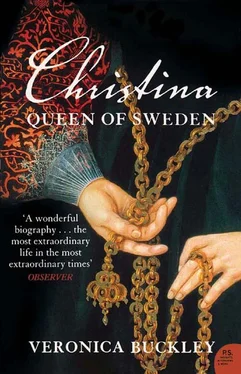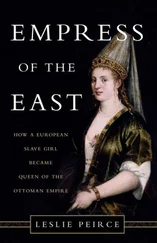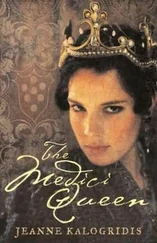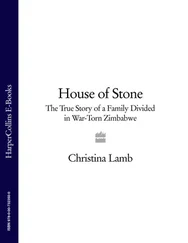In his diary, looking back to the years of his childhood, John Evelyn records:
I do perfectly remember…the effects of that comet, 1618…whose sad commotions sprang from the Bohemians’ defection from the Emperor Matthias: upon which quarrel the Swedes broke in, giving umbrage to the rest of the princes, and the whole Christian world cause to deplore it, as never since enjoying perfect tranquillity.’
The English diarist’s ‘comet’ of 1618 was no less than the beginning of the Thirty Years War, set in slow motion by the infamous ‘defenestration of Prague’, when the city’s two unhappy Habsburg governors were thrown from a window of the Hradčany Castle. 2The governors, ignobly landing on a dungheap, survived unhurt, disappointing many of the Emperor’s supporters of two early martyrs to the cause. But in the following years, there had been no lack of martyrs on either side, indeed, on all sides, for the war was proving less a struggle for or against imperial power than a muddled conflict of shifting alliances, religious, territorial, political, and personal. No one, it seems, had wanted war; fear had motivated most. But defensively, pre-emptively, unwittingly, dozens and then scores of combatant armies were gradually dragged or preached or bribed into the lists of the perverse, ancient battle for peace.
For generations, the Holy Roman Emperors of the German Nation had been successively elected from the Catholic Austrian House of Habsburg. 3The Empire, a loosely linked archipelago of hundreds of principalities and estates, cities and bishoprics, both Catholic and Protestant, was by no means exclusively German; territories as far afield as Lombardy had allowed it to claim its ‘Roman’ title, and it had once encompassed even the Papal States. But since the beginning of the Reformation, a hundred years before, its tenuous cohesion had been threatened by growing Protestant objections to the rule of a Catholic Emperor.
Of the Empire’s seven Electors, three were Catholic bishops, three Protestant princes, and the seventh was the elected King of Bohemia, in recent decades always Catholic and always a member of the Habsburg family. But as the aged and childless Emperor Matthias began to fail in health, the restive Protestants of Bohemia saw their chance. On the Emperor’s death, a new King of Bohemia would be elected, a new voice for the choosing of the next Holy Roman Emperor. They determined that the voice would not be Catholic, nor would it be the voice of a Habsburg, and they set their sights on Friedrich, the Calvinist Elector of the Palatine.
On Matthias’ death in March 1619, his titles of Archduke of Austria and King of Bohemia were assumed by his Habsburg cousin, Ferdinand of Styria, in the full expectation that the title of Holy Roman Emperor would also soon be his. But the Protestant Bohemians countered by deposing Ferdinand, and elected Friedrich as their King in his place. Ferdinand’s response was ferocious. In the autumn of 1620, at the great Battle of the White Mountain at Bíláhora near Prague, the Bohemian army was destroyed. Ferdinand exacted a terrible revenge: the gates of Prague were closed, and for a week his troops were licensed to take whatever they could. The city was sacked, and the gates of the Hradčany Castle itself were more than once blocked with wagonloads of plunder. For the rebels themselves, there was no mercy; the native nobility was simply wiped out, most by execution, the rest by confiscation of their lands and subsequent exile – many found their way to Sweden. Bohemia was forcibly re-Catholicized, while Friedrich’s expected allies, the union of German Protestant princes, 4stood anxiously by, shaking their heads.
Friedrich appealed to Gustav Adolf to adopt his cause and take up arms against the Habsburg forces, but the Danes had already answered the call, and the Swedes could not be persuaded to fight alongside their old enemies and former overlords. The hapless ‘Winter King’ continued a disheartened and desultory search for help, while his own Palatinate lands were occupied by Spanish Habsburg troops, cousins to Ferdinand’s Austrians. Thenceforth the greater part of Europe was gradually sucked into the vortex. The Dutch, seizing their chance to strike at the distracted Spaniards, fanned the flames with their plentiful banknotes. Catholic France, no friend to Catholic Austria or to Catholic Spain, joined the fray on the Protestant side, while every German field and town paid its pound of flesh.
In the months before Christina’s birth, the Spanish Habsburgs had been making a last attempt to reassert their own imperial strength, forging closer links with their Austrian relatives and trying to construct a united bloc of powers friendly to both Habsburg dynasties. The jewel now loosening from the Spanish imperial crown was the Dutch United Provinces – broadly, the northern area of today’s Netherlands. Since the end of their truce with Spain in 1621, the Dutch had been fighting once again for independence; their wealthy towns, with their enterprising immigrant populations, progressive administration, and advanced banking systems, had become a trading and financial nexus for Europe and far beyond. Such a prize the Spanish empire, long declining, could not afford to lose. The Spaniards hoped that combined Habsburg forces might seize the ports along the coast of northern Germany; from there, a strengthened Austrian-Spanish navy could control the Baltic Sea, cutting off the Dutch from the rich trade that was financing their military resistance.
The Austrian Habsburgs responded as their Spanish cousins had hoped. In April 1627, the Emperor Ferdinand II conferred on his general, Count Wallenstein, the title of Generalissimo of the Baltic and Open Seas. The new Generalissimo was already in control of several territories in northern Germany, and by November he had installed himself in the Baltic port of Wismar, where he set to work to build up the imperial navy. In the same month, Gustav Adolf wrote anxiously to his Chancellor Axel Oxenstierna: ‘The popish league comes closer and closer to us. They have by force subjugated a great part of Denmark, whence we must apprehend that they may press on to our borders, if they be not powerfully resisted in good time.’ 5The Chancellor agreed. Imperial forces had by now captured the whole of mainland Denmark, and the Danish King had been forced to retreat to his nearby islands. From Denmark an attack might easily be launched against Sweden itself, on its own territory. The situation, Oxenstierna remarked, ‘makes my hair stand on end’.
In January 1628, a secret committee of the Swedish Senate agreed to an invasion of the Emperor’s German lands if the King should deem it necessary. A pre-emptive attack, to draw the imperial forces away from their present too threatening position, had been Gustav Adolf’s own suggestion. In the face of the Habsburg threat, Poland was demoted to a secondary enemy, and Oxenstierna was accordingly dispatched to conclude a peace in the east, so that Swedish forces might be deployed elsewhere. After almost two years of negotiating, and twelve years of war, the Poles agreed to a truce. 6Since their king, Sigismund III, would not renounce his claim to the Swedish throne, a real peace remained elusive, but for Gustav Adolf a halt to the actual fighting was for now just as useful. It was an opportune moment for the Swedes to become involved at last in the great conflict which had been gathering pace in the Habsburg lands for more than a decade already. Protestant Germany had found no champion, and many exiled voices were calling for Swedish help. Now the armistice with Poland released thousands of battle-hardened men, ready for active service elsewhere.
Gustav Adolf’s decision met with loud applause from the Dutch; they had their Baltic trade to protect. But they were not the only power to welcome the idea of a Swedish march against the Empire. The French encouraged it, too, and promised to assist with subsidies; Catholic France was no friend to Catholic Austria, and Richelieu had hopes of using the Swedes as a pawn in his own ongoing game against the Emperor. But his terms were unacceptable to Gustav Adolf, and towards the end of 1629, preferring to find other allies, the King sent his own emissaries to the various courts and free cities of Europe; all returned empty-handed. The German Protestant princes, who had most to gain by a Swedish invasion, also declined to help, for by the same invasion, or so they feared, they also had most to lose.
Читать дальше












